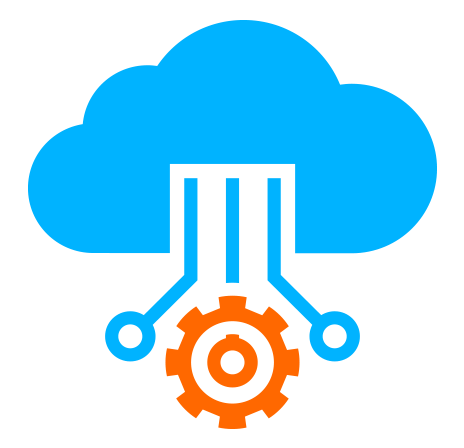 Server
Colocation
Server
Colocation
 CDN
Network
CDN
Network
 Linux Cloud
Hosting
Linux Cloud
Hosting
 VMware Public
Cloud
VMware Public
Cloud
 Multi-Cloud
Hosting
Multi-Cloud
Hosting
 Cloud
Server Hosting
Cloud
Server Hosting
 Kubernetes
Kubernetes
 API Gateway
API Gateway

Disaster Recovery as a Service (DRaaS) is a cloud-based solution that continuously replicates and backs up a business's critical data and applications to a secure offsite cloud environment. In the event of a disaster, DRaaS enables rapid failover to this cloud environment, minimizing downtime and data loss while ensuring business continuity and data resilience. It offers scalable, cost-effective, and automated disaster recovery with customizable recovery objectives, security, and regular testing to protect organizations against natural disasters, cyberattacks, and other disruptions.
Disaster Recovery as a Service (DRaaS) is a cloud computing service that replicates and hosts an organization's data, applications, and IT infrastructure in a third-party cloud environment. DRaaS provides businesses with an on-demand disaster recovery solution that ensures data protection and quick recovery of operations with minimal downtime, making it a critical component for business continuity planning.
DRaaS continuously or periodically replicates critical systems and data from the primary site to a cloud-based infrastructure. During a disruption—such as a natural disaster, ransomware attack, or hardware failure—a business can quickly switch operations to this cloud recovery site. Cloud-based virtual machines spin up automatically, enabling rapid failover and failback with minimal manual intervention. The recovery process usually achieves very low recovery time objectives (RTOs) and recovery point objectives (RPOs), which measure how quickly services are restored and how much data can be lost, respectively.
Continuous Data Replication: Ensures near real-time backup of data to remote cloud infrastructure, protecting against data loss.
Rapid Recovery: Enables organizations to resume critical operations within minutes rather than hours or days.
Scalability and Flexibility: Easily scales resources up or down depending on business needs without heavy upfront investments.
Automated Testing and Monitoring: Regular testing of recovery procedures and ongoing system monitoring guarantee disaster readiness.
Security and Compliance: Integrates strong encryption, access control, and compliance adherence with industry standards like GDPR and HIPAA.
Cost-Effectiveness: Eliminates the need for maintaining costly secondary data centers by leveraging public or private cloud infrastructure.
Multi-Platform Support: Compatible with diverse operating systems, virtual environments, and cloud platforms.
Geo-Redundancy: Stores backup data in multiple geographically distributed cloud locations for enhanced resiliency.
Traditional disaster recovery typically requires organizations to maintain duplicate physical infrastructure offsite, which entails significant capital expenditure, complexity, and slower recovery times. DRaaS shifts this model to a cloud-based service with automated orchestration, drastically reducing costs and enhancing recovery speed. Also, DRaaS offers a pay-as-you-go model, making effective disaster recovery accessible for businesses of all sizes.
|
Feature |
Traditional DR |
DRaaS |
|
Infrastructure |
Physical offsite hardware |
Cloud-based virtual environment |
|
Cost |
High capital and maintenance costs |
Pay-as-you-go, operational expenses |
|
Recovery Time (RTO) |
Hours to days |
Minutes to hours |
|
Scalability |
Limited by physical assets |
Highly scalable |
|
Testing |
Manual and infrequent |
Automated and frequent |
|
Management |
Requires in-house expertise |
Managed by service provider |
Organizations that rely heavily on IT systems and data for operations, including enterprises, SMBs, and startups, can benefit from DRaaS. It is especially valuable in industries where data loss or downtime results in significant revenue loss, reputational damage, or regulatory penalties, such as healthcare, finance, manufacturing, retail, and services.
Compliance and Security in DRaaS
DRaaS providers implement stringent security protocols such as end-to-end encryption, multi-factor authentication, and compliance frameworks, helping organizations meet regulatory requirements like GDPR, HIPAA, and PCI-DSS. These measures safeguard data against breaches during backup, storage, and recovery processes, enhancing overall cyber resilience.
Important factors for selecting a DRaaS vendor include:
> Recovery objectives (RTO, RPO) aligned with business needs.
> Cloud infrastructure reliability and geographic distribution.
> Integration with existing IT environments and applications.
> Regular testing and monitoring services.
> Security certifications and compliance adherence.
> Cost transparency and flexible pricing models.
> Support and managed service capabilities.
Q: How fast can DRaaS restore operations after a disaster?
A: DRaaS solutions can restore IT operations within minutes, drastically reducing downtime compared to traditional recovery methods.
Q: Is DRaaS suitable for small businesses?
A: Yes, DRaaS offers flexible, pay-as-you-go pricing, making disaster recovery affordable and accessible even for small and medium-sized businesses.
Q: Can DRaaS protect against ransomware attacks?
A: Yes, DRaaS enables quick recovery to clean backup states, minimizing ransomware impact on data and operations.
Q: What’s the difference between backup and disaster recovery?
A: Backup involves copying data for preservation, whereas disaster recovery includes comprehensive IT system restoration to resume business operations.
Conclusion
DRaaS is a transformative cloud-based approach to disaster recovery that brings speed, reliability, and cost-efficiency to business continuity planning. By leveraging automated data replication, rapid failover, and cloud scalability, organizations can protect critical data and maintain operations through any disruption. Cyfuture Cloud’s DRaaS solutions offer tailored, secure, and comprehensively managed disaster recovery services designed to keep businesses resilient in an increasingly unpredictable digital world.

Let’s talk about the future, and make it happen!
By continuing to use and navigate this website, you are agreeing to the use of cookies.
Find out more


